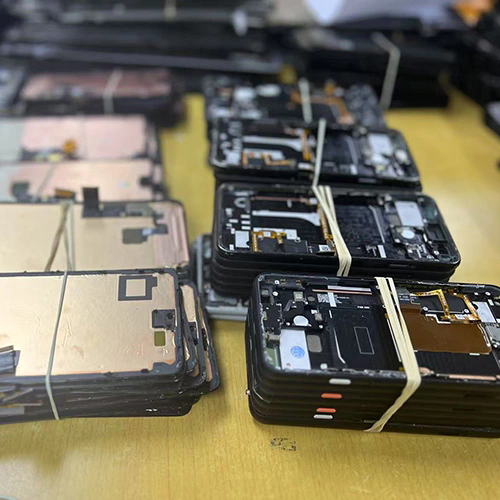With the rapid iteration of smart devices, the demand for LCD screen replacement continues to grow. Many repair shops, electronics recycling companies, and even individual users are now paying attention to the emerging business model of “LCD Buyback.” By collecting, inspecting, refurbishing, and reselling broken or discarded LCD screens, LCD buyback has gradually become an important part of the electronics industry. But what exactly is the value of LCD buyback, and is it worth joining this market?

Where Does the Main Profit of LCD Buyback Come From?
LCD screens—especially original screens from high-end brand devices—retain considerable value, even when damaged. Buyers collect broken screens in bulk, use professional tools for testing and refurbishment, and resell the functional ones to the market, generating profit margins. Screens from brands like Apple and Samsung, in particular, maintain high value in the buyback market.
What Types of LCD Screens Can Be Recycled?
Not all LCD screens have buyback value. Those that are most suitable for refurbishment include screens with intact displays but cracked glass, screens with working touch functions despite visible damage, or slightly water-damaged screens where the motherboard is still intact. Severely burnt, leaking, or non-functional screens typically have no resale value. Therefore, a professional testing process is essential to identify which items can be repaired and which cannot.
Is the LCD Buyback Process Complicated?
The typical LCD buyback process includes five key steps: collection, testing, classification, refurbishment, and resale. This process requires specialized tools such as inspection equipment, adhesive removal machines, and light inspection platforms. It also demands technical skill and attention to detail. However, by working with established platforms or receiving proper training, newcomers can reduce difficulty and increase efficiency.
Who Is Suitable for LCD Buyback?
Phone repair shops, second-hand electronics dealers, e-commerce sellers, and entrepreneurs with basic knowledge of electronics are all ideal candidates for entering the LCD buyback business. While the barrier to entry is relatively low, success depends on access to a stable supply chain, reliable recycling sources, and skilled labor. Those with consistent sourcing and repair resources will have a competitive edge.
How Can You Ensure a Stable and Profitable Buyback Process?
To keep your LCD buyback business running smoothly, it's essential to work with reputable and transparent platforms or suppliers. Ensure fair pricing, reliable refurbishment services, and access to clear resale channels. A structured cooperation model and solid after-sales service can also minimize transaction risks and boost overall profits.
Join the LCD Buyback Industry for Efficient Electronic Resource Recycling
LCD buyback is not only a promising business opportunity but also an effective way to promote the circular use of electronic resources. If you’re considering entering this field or seeking a reliable buyback partner, we welcome you to visit our website at [www.topyet.com] to learn more about our professional services and cooperation options—helping you confidently launch your LCD buyback journey.





